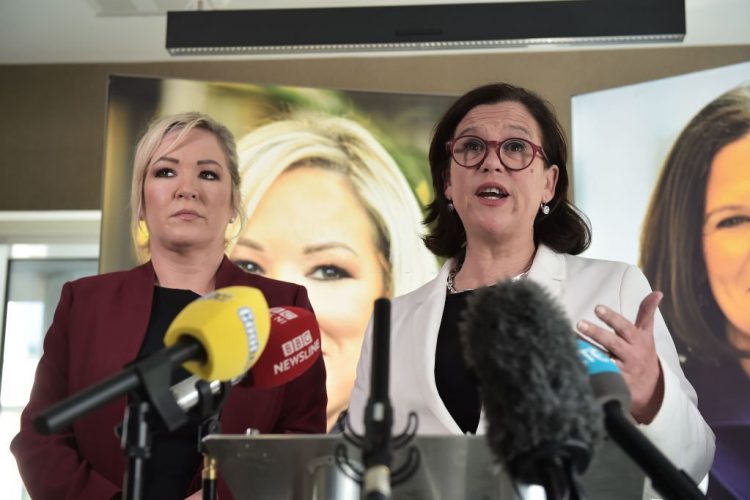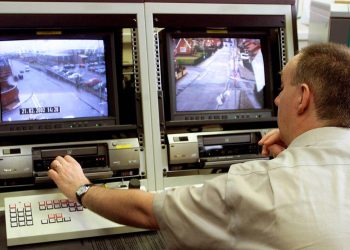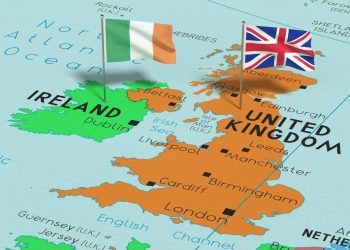Sinn Féin’s Resurgence Marks Left-Wing Agenda’s Appeal Amid Housing and Healthcare Challenges
Sinn Féin’s resurgence in the Republic of Ireland can be attributed to its left-wing agenda, which tackles urgent contemporary issues. Escalating property costs, homelessness, and inadequate healthcare have drawn younger demographics to the party. Despite its fundamental goal of achieving a united Ireland, Sinn Féin gained popularity by tackling housing challenges and proposing an ‘Irish NHS’. This approach resonated with voters, propelling support beyond 30% and surpassing traditional rivals by a wide margin. While Irish
unity isn’t its primary focus, the party’s rise could inadvertently trigger a constitutional predicament in the UK, echoing Scotland’s embrace of the SNP and its constitutional
implications over time.
Northern Ireland Undergoes Transformation and Bring Political Shift
Northern Ireland is experiencing a seismic political shift as well. The Good Friday Agreement brought peace but has seen its institutions suspended for years. The decline of political Protestants, surpassed by cultural Catholics in numbers and election successes, marks a transition. Meanwhile, shifting demographics and changing attitudes towards Irish unity have emerged. Polls indicate that many Catholic and Protestant populations lean towards a united Ireland fueled by dissatisfaction with existing governance, Brexit uncertainties, and progressive inclinations. The future lies in Sinn Féin’s ability to fulfil its promises and Northern Irish civil society’s capacity to advocate for unity as a path to social justice and a better life. As British nationalism remains volatile, the potential for a Sinn Féin-led Ireland to entice voters with an alternative narrative gains momentum, indicating a profound shift in the making.
Sinn Fein Achieves Historic Victory in Northern Ireland Assembly, Initiating a New Era
In a momentous turn, the Irish nationalist party Sinn Féin has achieved a significant triumph in the Northern Ireland Assembly, marking what its leaders characterise as a pivotal juncture. Securing an impressive 27 seats out of the total 90, Sinn Féin is now poised to claim the prestigious position of first minister in Belfast, a remarkable milestone since the establishment of Northern Ireland as a predominantly Protestant entity in 1921. In stark contrast, the Democratic Unionist Party (DUP), which had maintained its stronghold in the region’s legislature for the past two decades, managed to secure only 24 seats. This underscores the evolving dynamics that might carry profound implications for Northern Ireland’s political landscape.
A Complex Path Forward: Sinn Fein’s Victory Paves the Way for Unity, Amidst Uncertainties and Challenges
While Sinn Fein’s remarkable victory in the Northern Ireland Assembly signals a significant shift in regional politics, the journey towards unity and its broader consequences remain multifaceted. Historically tied to the Irish Republican Army, Sinn Fein’s ascendancy has been met with anticipation and apprehension. Despite its deep connection to Irish republican militancy, Sinn Fein’s focus on transformative politics marks an evolving perspective, with leaders stressing the importance of collaboration and forming a functioning Executive government. However, navigating Northern Ireland’s power-sharing intricacies and addressing the contentious post-Brexit border arrangements present formidable challenges for Sinn Fein, setting the stage for intricate negotiations and decisive choices that could redefine the region’s future.
Sinn Féin’s Electoral Triumph in Northern Ireland: Impacted by DUP’s Strategies
In an electoral development of significant proportions, Sinn Féin has achieved unprecedented success in Northern Ireland’s recent council elections. The outcomes have been primarily attributed to the political tactics employed by their traditional rivals, the Democratic Unionist Party (DUP). As Sinn Féin’s projected lead materialised, the party surpassed even its own most optimistic predictions. The weekend’s marathon vote count culminated in Sinn Féin securing an impressive 39-seat gain, elevating their seat count to 144. With a 30.9% vote share, this achievement, exceeding their previous performance in the 2021 Northern Ireland Assembly election, positions Sinn Féin for potentially historic leadership under Michelle O’Neill’s stewardship.
Stalemate in Politics: Sinn Féin’s Resurgence and Cross-Community Executive Delays
The burgeoning success of Sinn Féin has not translated into immediate cross-community leadership in Northern Ireland’s executive government, as envisioned by the Good Friday peace accord. Hindered by the Democratic Unionists’ (DUP) steadfast opposition to forming a government, the power-sharing framework complicates Sinn Féin’s ascent to power. The deadlock at Stormont, rooted in the DUP’s refusal to cooperate, has potentially catalysed the support Sinn Féin requires for its leadership ambitions. As voters become increasingly disillusioned by the deadlock, traditional unionist supporters have been drawn toward Sinn Féin, amplifying the party’s appeal and raising whether Sinn Féin’s ascendancy will reshape Northern Ireland’s political landscape.
Symbolism and Political Aspirations in Belfast’s Falls Road
The streets of Belfast’s Falls Road hold a striking emblem that captures the attention of passersby—an unmistakable phrase in Irish, “Tiocfaidh ar la,” signifying “Our day will come.” This expression, laden with meaning, represents the hopes of Irish nationalists, particularly Sinn Féin, a political entity steadfastly committed to realising unification for the island of Ireland. Sinn Féin’s recent triumph in the Northern Ireland assembly elections, where it emerged as the foremost party in Stormont, has invigorated these aspirations. While Brexit is often cited as a pivotal catalyst for Sinn Féin’s electoral ascent, this phenomenon is rooted in years of strategic recalibration, emphasising working-class concerns and appealing to burgeoning young voters.
Sinn Féin’s Strategic Gains and the Changing Dynamics of Power”
The aftermath of the Northern Ireland Assembly elections on May 5 witnessed a seismic shift in the island’s political landscape, with profound implications for the future. Sinn Féin’s resounding victory in this electoral contest resonates far beyond the immediate impact of Brexit. This ascendancy, which Sinn Féin has strategically cultivated over time, rests on a multifaceted foundation, including its embrace of left-leaning policies, commitment to Irish unity, and adept navigation of generational change. While the electoral surge can be partly attributed to the backlash against Brexit, it is rooted in Sinn Féin’s dexterous fusion of national identity and progressive socioeconomic agendas, resonating deeply with the working-class populace and a burgeoning young electorate.
Reshaping Identities and Relationships
The evolving political landscape in the UK and Ireland stands witness to transformative shifts that have the potential to reshape the region’s identities and relationships. As Sinn Féin’s resurgence gains momentum, the Republic of Ireland and Northern Ireland experience significant political realignments. The party’s left-wing agenda, resonating with the challenges of housing and healthcare, has propelled it to the forefront of Irish politics. This resurgence marks a call for transformative policies and an embrace of Irish unity. While immediate concerns force Sinn Féin’s ascendancy, its pursuit of unity sends ripples that could challenge the status quo and redefine the UK’s composition.





























